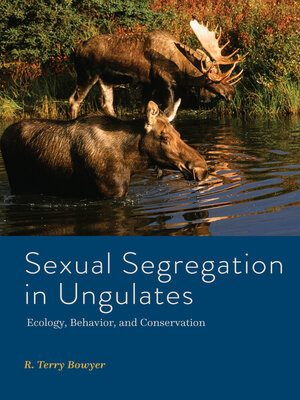Sexual Segregation in Ungulates
ebook ∣ Ecology, Behavior, and Conservation · Wildlife Management and Conservation
By R. Terry Bowyer

Sign up to save your library
With an OverDrive account, you can save your favorite libraries for at-a-glance information about availability. Find out more about OverDrive accounts.
Find this title in Libby, the library reading app by OverDrive.



Search for a digital library with this title
Title found at these libraries:
| Library Name | Distance |
|---|---|
| Loading... |
Why does it benefit some male and female animals to live separately?
Winner of the Wildlife Society Publication Best Authored Book Award by The Wildlife Society
Sexual segregation, wherein the sexes of a species live apart for long periods of time, has far-reaching consequences for the ecology, behavior, and conservation of hooved mammals, which are called ungulates. Award-winning researcher R. Terry Bowyer has spent the past four decades unravelling the causes and consequences of this perplexing phenomenon by studying ungulates and the large carnivores that prey upon them.
In Sexual Segregation in Ungulates, Bowyer's critical, thought-provoking approach helps resolve long-standing disagreements concerning sexual segregation and offers future pathways for species and habitat conservation. He highlights important elements of the natural history of wild ungulate species, including bighorn sheep and elk. He then uses this perspective to frame and test hypotheses illuminating the motivations behind sexual segregation. He investigates the role of sexual segregation in mechanisms underpinning ungulate mating systems, sexual dimorphism, paternal behavior, and population dynamics.
Bowyer's research spans ecosystems from deserts to the Arctic and involves most species of ungulates inhabiting the North American continent. He also provides a timely review of sexual segregation for species of plants and other animals, including humans. Covering definitions, theory, findings, and practical applications of related study, Bowyer describes the behavioral patterns related to sexual segregation, explains how to detect these patterns, and considers the implications of sexual segregation for new approaches to conservation and management of ungulates and other species of wildlife.
This book is essential reading for scientists and all those interested in the conservation and management of species, including wildlife professionals, hunters, outdoor enthusiasts, and naturalists.







